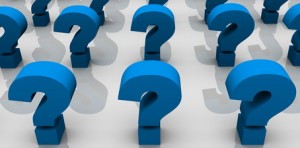You’ve Been In A Car, Bicycle, Pedestrian or Motorcycle Accident. Now What?
by John Mesirow

You could probably find hundreds of articles about this on the internet. So why read this one? Because this is the “no BS” version you won’t find elsewhere. Sure, there will be some overlap with other articles. But I’ll give it to you straight, as I always do, whether you’re sitting there, or sitting here across the desk from me.
First, and this should be obvious, tend to your injuries. (Of course if you’re able to, also tend to the injuries of anyone else involved in the accident.) In an ideal world, while you’re lying there on the ground (as is the case in most bicycle and pedestrian accidents), or sitting in your car waiting for the haze to clear from your brain, someone will have already called 911. That may not be the case. Often times you’ll be the one calling 911. If you’re not sure if you need an ambulance, call anyway. It’s better to err on the side of caution. I can’t stress this enough. I once had a client who lost consciousness at the scene, but then seemed fine. He did not go to the hospital. Later that day, he was found passed out. His brain had been bleeding the entire time. He died days later. Please take this advice to heart.
That said, if it’s a minor accident and you’re sure you don’t need an ambulance, don’t call one just to build up your claim. Why not? (1) It’s a waste of scarce resources. (2) It will only marginally increase the value of your case (if at all) if the hospital records don’t show anything other than a very mild injury. (3) It’s a waste of your time. If you start to feel bad hours after the accident or the next day (which often happens), then you should go to the hospital (or your doctor, if you’re able to get in that day.)
Second, call the police. They won’t always write a report or issue a citation, but they often will. Different jurisdictions have different thresholds for writing reports. For example, some jurisdictions will not write a report if both cars are drivable and nobody leaves the scene by ambulance. These criteria are absurd. Many of these accidents are rear-end collisions where it’s clear that someone broke the law! For goodness sake, issue a citation! Next time the rear-ender might cause a really bad wreck. It’s not enough to exchange insurance information. The offending party should be cited and have to pay the consequences, not just in the form of higher insurance premiums.
Third, if at all possible, get the names of any witnesses. In that ideal world, a witness (or two) will hand you a card (or a scrap of paper with their name and number) and tell you that they saw the whole thing. Unfortunately that only happens in about 10% of our cases. In many jurisdictions, the police have the names of the witnesses, but do not include this information in the report! Since the police officers are usually out on the street, it’s very time-consuming for us to get this information from them. So get it at the scene if you can! (We then have our investigator call each witness to get a recorded statement. Fault may seem obvious, but you can’t have too many witnesses.)
Fourth, at some point, take pictures of all of your injuries, and of the damage to your vehicle. You can’t take too many pictures. They are extremely useful both in the settlement stage and at trial. (I had a new client come in the other day with 50 pictures on his phone!) If you’re badly injured, don’t even try to do this at the scene. (If a friend or family member comes to the scene, or a less severely injured passenger can do so, have them take photos of your bicycle or vehicle and the other vehicle(s).)
This is by no means an exhaustive description of what you should do at the scene, but it touches on the most important things to be done immediately after an accident. If you forget everything else, don’t forget the first thing – tend to yourself. Other than your integrity, there’s not much that is more important than your health.
 Washington, DC Accident Lawyer Mesirow & Associates Home
Washington, DC Accident Lawyer Mesirow & Associates Home



